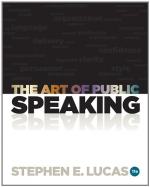Suggestions for the Use of Description
Decide, on beginning a description, what point of view you wish your hearers to take. One cannot see either a mountain or a man on all sides at once. Establish a view-point, and do not shift without giving notice.
Choose an attitude toward your subject—shall it be idealized? caricatured? ridiculed? exaggerated? defended? or described impartially?
Be sure of your mood, too, for it will color the subject to be described. Melancholy will make a rose-garden look gray.
Adopt an order in which you will proceed—do not shift backward and forward from near to far, remote to close in time, general to particular, large to small, important to unimportant, concrete to abstract, physical to mental; but follow your chosen order. Scattered and shifting observations produce hazy impressions just as a moving camera spoils the time-exposure.
Do not go into needless minutiae. Some details identify a thing with its class, while other details differentiate it from its class. Choose only the significant, suggestive characteristics and bring those out with terse vividness. Learn a lesson from the few strokes used by the poster artist.
In determining what to describe and what merely to name, seek to read the knowledge of your audience. The difference to them between the unknown and the known is a vital one also to you.
Relentlessly cut out all ideas and words not necessary to produce the effect you desire. Each element in a mental picture either helps or hinders. Be sure they do not hinder, for they cannot be passively present in any discourse.
Interruptions of the description to make side-remarks are as powerful to destroy unity as are scattered descriptive phrases. The only visual impression that can be effective is one that is unified.
In describing, try to call up the emotions you felt when first you saw the scene, and then try to reproduce those emotions in your hearers. Description is primarily emotional in its appeal; nothing can be more deadly dull than a cold, unemotional outline, while nothing leaves a warmer impression than a glowing, spirited description.
Give a swift and vivid general view at the close of the portrayal. First and final impressions remain the longest. The mind may be trained to take in the characteristic points of a subject, so as to view in a single scene, action, experience, or character, a unified impression of the whole. To describe a thing as a whole you must first see it as a whole. Master that art and you have mastered description to the last degree.
SELECTIONS FOR PRACTISE
THE HOMES OF THE PEOPLE




